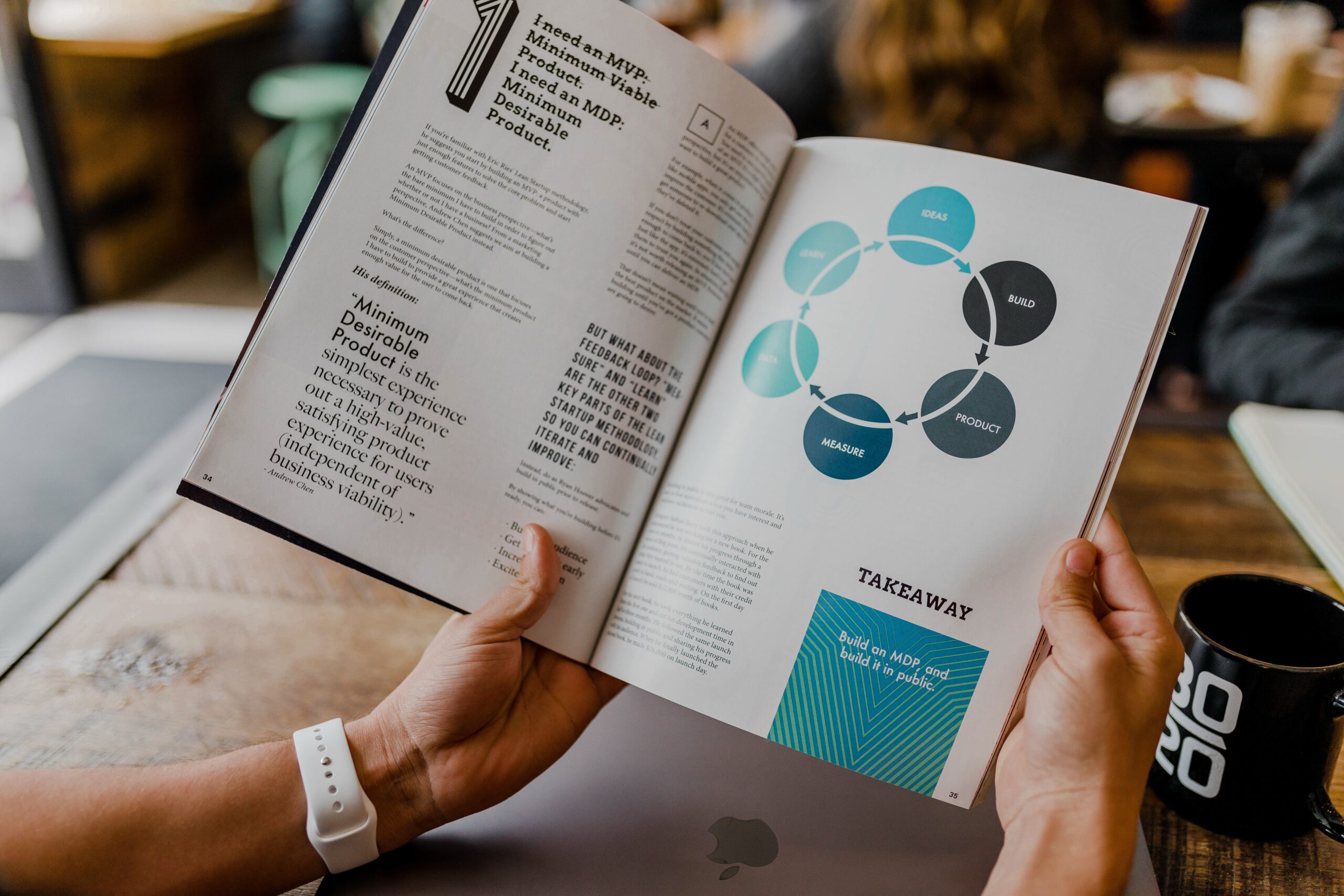As a side project or new startup, one of the biggest challenges you’ll face is finding and reaching your ideal customers. Without a solid strategy to get in front of the right people, your business may struggle to gain traction and grow.
Fortunately, there are several effective strategies you can use to get in front of your ideal customers and start generating interest in your product or service. In this article, we’ll explore some of these strategies and provide you with actionable tips on how to implement them.
The question of “Who is your ideal customer?” may seem overwhelming, but defining your ideal customer is crucial to everything that follows. To help you define your ideal customer, check out the Ideal Customer Profile Framework provided in the link. If you do not know your ideal customer, then it will be difficult, if not impossible, to proceed from this point. Once you have defined your ideal customer’s demographics, psychographics, and characteristics, you can seek out more people or companies that fit your template. Your ideal customers can include your current customers (although not all your customers may be ideal), unconverted prospects, or even customers of your competitors.
- Start with your current customers
Your current customers are a valuable source of information for identifying your ideal customer. You can gather data on their age, gender, location, occupation, income, and other demographics through surveys, email, phone, or chat. Additionally, you can ask for feedback on your products or services, and what they like or dislike about them. This can help you identify areas for improvement or new product development.
Some examples of startups that leveraged talking with their current users to define their ideal customers:
- Slack – Slack initially launched as an internal communication tool for the gaming company Tiny Speck, but the founders realized that it had broader potential after seeing how much their users loved it. They then talked to more potential users to understand their needs and refined their ideal customer profile.
- Dropbox – Dropbox started by targeting individuals who wanted an easy way to store and share files, but after talking with their current users, they realized that businesses could also benefit from their product. They then shifted their focus to target small and medium-sized businesses.
- Airbnb – Airbnb founders talked with their early adopters and learned that they were using the platform to find unique and affordable accommodations when traveling for events, such as conferences and festivals. They then refined their ideal customer profile to target this group.
- Stripe – Stripe founders initially targeted developers who were frustrated with existing payment processing solutions. They then talked with their current users and discovered that many of them were startups who needed a simple and flexible payment system. They then refined their ideal customer profile to target this group.
- Intercom – Intercom founders initially targeted software companies who were struggling with customer communication, but after talking with their current users, they realized that other types of businesses could also benefit from their product. They then refined their ideal customer profile to target small and medium-sized businesses in a variety of industries.
- Zoom – Zoom founders talked with their current users and learned that many of them were using the platform for remote work and online education. They then refined their ideal customer profile to target businesses and schools that needed a reliable and easy-to-use video conferencing solution.
- Hubspot – Hubspot founders initially targeted small businesses who wanted to improve their online marketing, but after talking with their current users, they realized that larger companies could also benefit from their product. They then refined their ideal customer profile to target mid-sized companies in a variety of industries.
- Canva – Canva founders talked with their current users and learned that many of them were small business owners and social media marketers who needed an easy and affordable way to create high-quality graphics. They then refined their ideal customer profile to target this group.
- Calm – Calm founders talked with their early adopters and learned that many of them were looking for a way to reduce stress and anxiety. They then refined their ideal customer profile to target people who wanted to improve their mental health and wellbeing.
- Headspace – Headspace founders talked with their early adopters and learned that many of them were looking for a way to learn meditation and improve their mental health. They then refined their ideal customer profile to target people who wanted to learn mindfulness and meditation.
- Conduct industry-level research and surveys
Industry-level research and surveys can provide a wealth of information on your target audience. You can gather data on market trends, consumer behavior, and preferences, which can help you identify potential areas for growth or improvement.
Many early-stage startups use industry-level research and surveys to better understand their target audience and market. Here are a few examples:
- HubbleHQ: HubbleHQ is a London-based startup that helps businesses find office space. The company conducted a survey of over 1,000 UK office workers to understand their preferences and priorities when it comes to workplace amenities, such as bike storage, showers, and communal spaces.
- Clearbanc: Clearbanc is a fintech startup that provides funding to ecommerce businesses. To better understand the market, the company conducted a survey of over 1,200 ecommerce businesses to learn about their funding needs, revenue streams, and growth plans.
- UserTesting: UserTesting is a platform that allows companies to get feedback from real users on their websites and apps. To better understand the user experience (UX) design market, the company conducted a survey of over 1,200 UX professionals to learn about their roles, responsibilities, and challenges.
- Hims: Hims is a direct-to-consumer healthcare startup that offers products for hair loss, erectile dysfunction, and other issues. To better understand its target market, the company conducted a survey of over 1,000 men to learn about their attitudes towards healthcare and their willingness to try new products.
- GrubMarket: GrubMarket is a San Francisco-based startup that connects consumers with local farmers and food producers. To better understand the market for sustainable food, the company conducted a survey of over 2,000 US consumers to learn about their attitudes towards organic and locally-sourced food, as well as their buying habits.
- Look at cancelled customers and free trials that didn’t convert
Cancelled customers and free trials that didn’t convert can provide valuable insights into why people may not be interested in your products or services. You can conduct exit surveys or ask for feedback to understand what didn’t work for them and why. Some real-world examples of how analyzing cancelled customers and free trials can help businesses better understand their customers:
- Netflix: When Netflix started offering streaming video, they provided a free trial to attract new customers. However, many of these free trial users didn’t convert to paying customers. By analyzing their behavior, Netflix found that some users weren’t sure how to use the service or were overwhelmed by the large selection of movies and TV shows. To address this, Netflix started offering personalized recommendations based on users’ viewing history, making it easier for users to find content they were interested in.
- Spotify: Spotify allows users to sign up for a free trial of its premium service, but many users don’t convert to paying customers after the trial period ends. To better understand why, Spotify analyzed the behavior of users who cancelled their subscriptions. They found that many users cancelled because they didn’t understand the value of the premium service or didn’t use it enough to justify the cost. To address this, Spotify started offering more personalized recommendations and highlighting exclusive content that was only available to premium users.
- Blue Apron: Blue Apron is a meal delivery service that offers a free trial to new customers. However, many users who signed up for the trial cancelled their subscription after the first week. By analyzing their behavior, Blue Apron found that many users were overwhelmed by the amount of work required to prepare the meals. To address this, Blue Apron started offering more pre-prepared ingredients and simplified recipes, making it easier for users to cook their meals.
In each of these examples, analyzing cancelled customers and free trials helped these companies better understand their customers’ needs and preferences, leading to improvements in their products and services.
- Talk to non-customers
Talking to non-customers can help you get a wider perspective on your target audience. You can gather data on why they haven’t bought from you, what their needs and preferences are, and what they’re looking for in a product or service.
Talking to non-customers can provide valuable insights into why they haven’t purchased from you and what they are looking for in a product or service. Here are some real-world examples of how businesses have gained valuable insights from talking to non-customers:
- Dropbox: When Dropbox first launched, the company’s founders were having trouble getting traction with their product. They decided to talk to people who had signed up for the service but had never used it. Through these conversations, they discovered that many people were hesitant to use Dropbox because they were concerned about the security of their data. Based on this feedback, Dropbox improved their security features and were eventually able to gain a larger customer base.
- Airbnb: When Airbnb first started, the company’s founders were struggling to get people to trust the idea of renting out their homes to strangers. They decided to talk to people who had signed up for the service but had never booked a stay. Through these conversations, they discovered that people were hesitant to use Airbnb because they were concerned about the safety of their homes. Based on this feedback, Airbnb improved their verification and insurance policies, and were eventually able to gain more trust and customers.
- Slack: When Slack was first launched, the founders were having trouble getting traction with their product. They decided to talk to people who had signed up for the service but had never used it. Through these conversations, they discovered that people were hesitant to use Slack because they were concerned about the amount of time it would take to set up and learn how to use the platform. Based on this feedback, Slack improved their onboarding process and were eventually able to gain a larger customer base.
These examples show how talking to non-customers can help businesses gain valuable insights into why they may not be attracting customers and what they can do to improve their product or service. By listening to feedback and making changes based on that feedback, businesses can improve their chances of success and attract more customers.
- Look for customers of your competitors
Customers of your competitors can provide valuable insights into their product selection process, decision-making criteria, and trusted sources. You can find them by looking for testimonials and case studies on your competitor’s site, LinkedIn profiles and groups, product certifications, tweets, oDesk profiles, or Facebook. During these conversations, ask about other competitors they may have evaluated and why they chose the one they did, who else they trust in the industry, what blogs they read, if they bought direct or through a distributor/VAR/app store, and so on.
Here are some real-life examples of how companies have gained insights by talking to customers of their competitors:
- HubSpot: HubSpot, a marketing automation company, wanted to understand how its competitors were positioning themselves in the market. They reached out to customers of its competitors, specifically those who had recently switched from HubSpot to a competitor, and conducted interviews to gain insights into what factors led to the switch. HubSpot discovered that price was a major factor, and as a result, they decided to introduce a lower-priced tier for their product.
- Salesforce: Salesforce, a customer relationship management (CRM) software company, wanted to understand how its customers were using its product compared to its competitors. They conducted interviews with customers of their competitors and found that their customers preferred Salesforce’s user interface and ease of use. This led Salesforce to make changes to their product to further improve the user experience.
- Dropbox: Dropbox, a cloud storage company, wanted to understand why some customers were choosing competitors over their product. They reached out to customers of their competitors and found that many customers were choosing competitors because of better integration with other software applications. This led Dropbox to invest in developing integrations with popular software applications to improve their product offering.
By talking to customers of your competitors, you can gain insights into what your competitors are doing well and where they fall short. This can help you identify areas where you can differentiate yourself from your competitors and improve your product or service to better meet the needs of your target audience.









